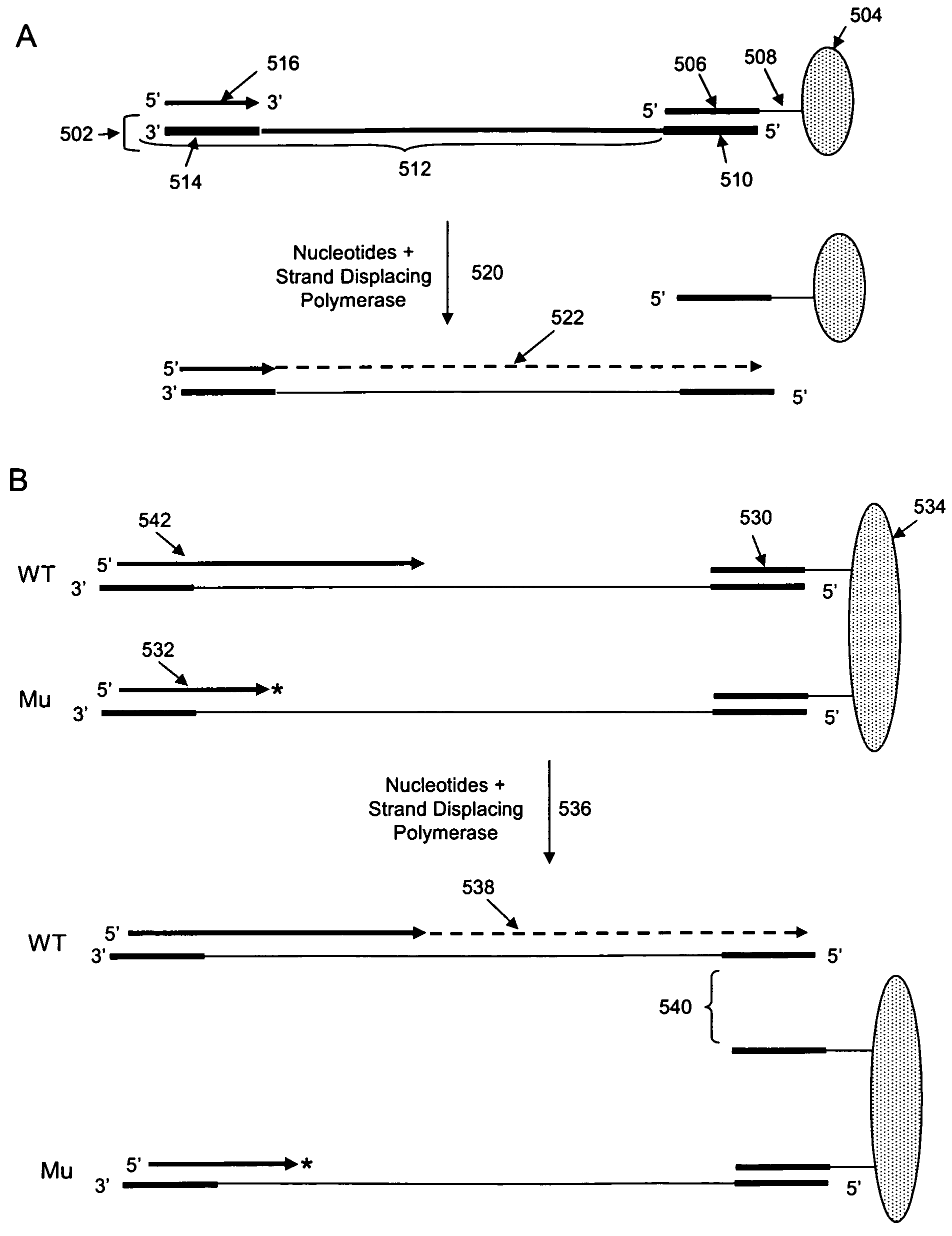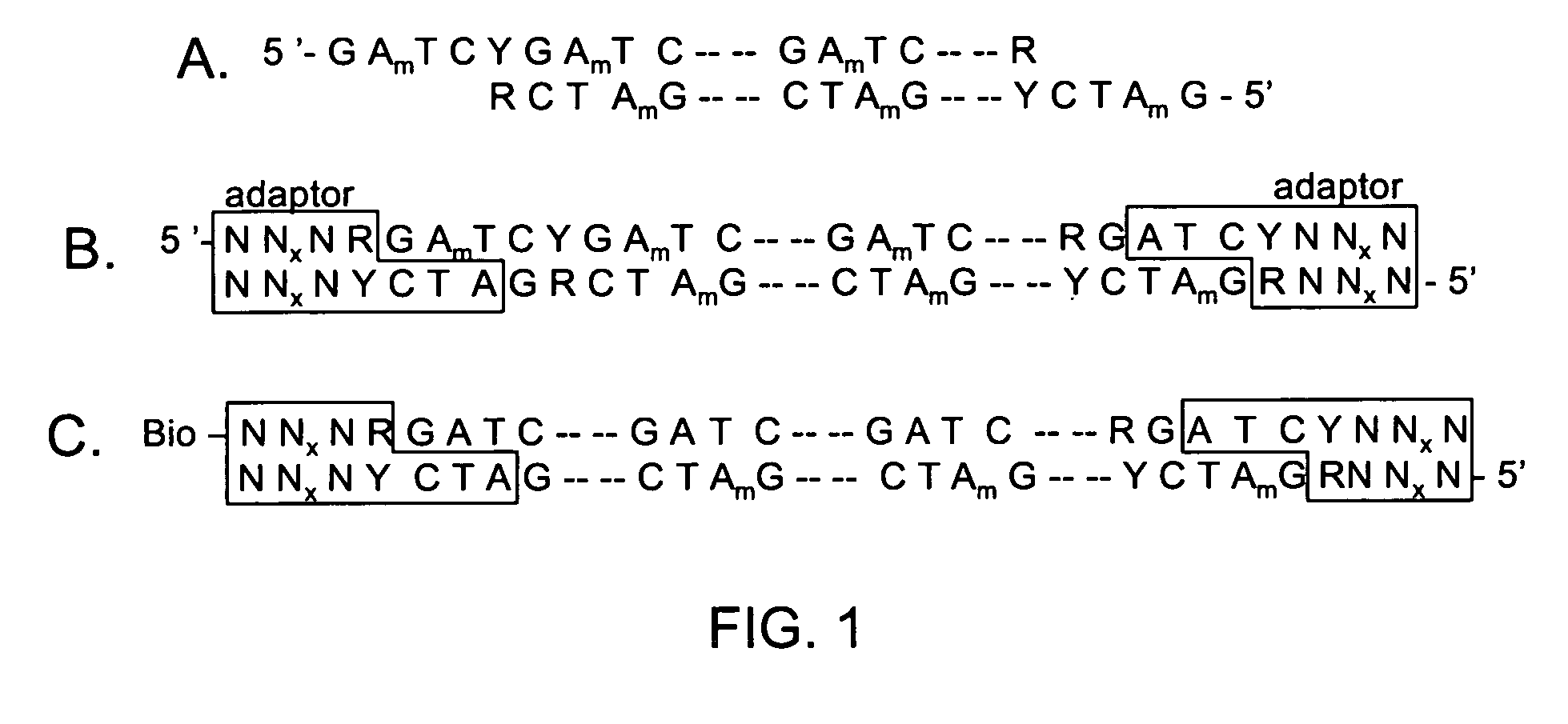Methods and compositions for isolating nucleic acid sequence variants
a nucleic acid sequence and composition technology, applied in the direction of sugar derivatives, microorganism testing/measurement, biochemistry apparatus and processes, etc., can solve the problems of insufficiently addressed current techniques for rapid and efficient discovery of genetic or epigenetic variation
- Summary
- Abstract
- Description
- Claims
- Application Information
AI Technical Summary
Benefits of technology
Problems solved by technology
Method used
Image
Examples
Embodiment Construction
[0100]The invention is drawn to isolating nucleic acids having a sequence within a locus of interest that is different from a reference sequence for the locus of interest (e.g., isolation of a nucleic acid having a mutation or polymorphism in a locus of interest). In certain aspects, a mixture of nucleic acids, each having a locus of interest, are subjected to an iterative primer extension method targeted within the locus of interest (e.g., using a polymerization primer that hybridizes immediately upstream or within the locus of interest). The primer extension reactions are rationally designed based on the reference sequence for the locus of interest such that variant nucleic acids incorporate at least one distinguishing nucleotide into the polymerizing strand as compared to non-variant (or wild type) nucleic acids. Incorporation of this at least one distinguishing nucleotide allows the subsequent isolation of any variant nucleic acid strand(s) from non-variant strands. In other wor...
PUM
| Property | Measurement | Unit |
|---|---|---|
| temperature | aaaaa | aaaaa |
| temperature | aaaaa | aaaaa |
| temperature | aaaaa | aaaaa |
Abstract
Description
Claims
Application Information
 Login to View More
Login to View More - R&D
- Intellectual Property
- Life Sciences
- Materials
- Tech Scout
- Unparalleled Data Quality
- Higher Quality Content
- 60% Fewer Hallucinations
Browse by: Latest US Patents, China's latest patents, Technical Efficacy Thesaurus, Application Domain, Technology Topic, Popular Technical Reports.
© 2025 PatSnap. All rights reserved.Legal|Privacy policy|Modern Slavery Act Transparency Statement|Sitemap|About US| Contact US: help@patsnap.com



